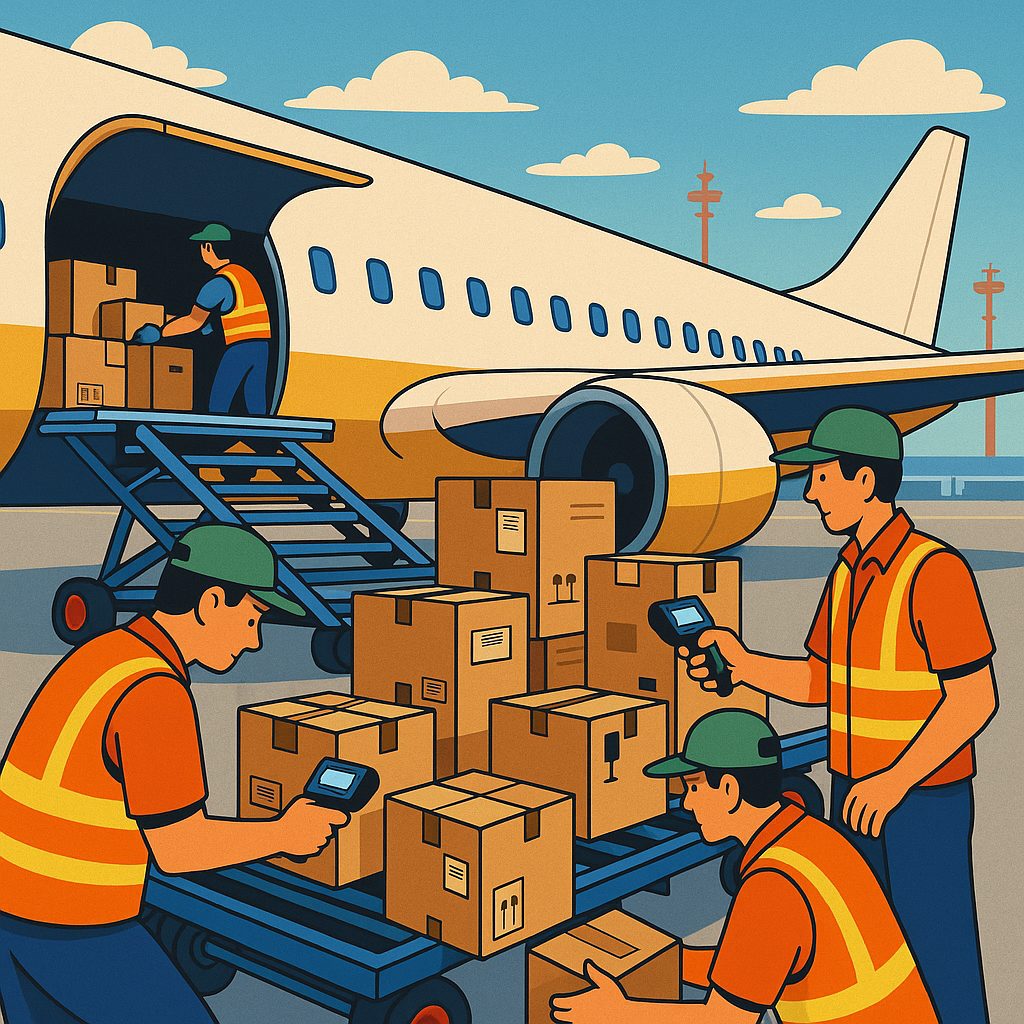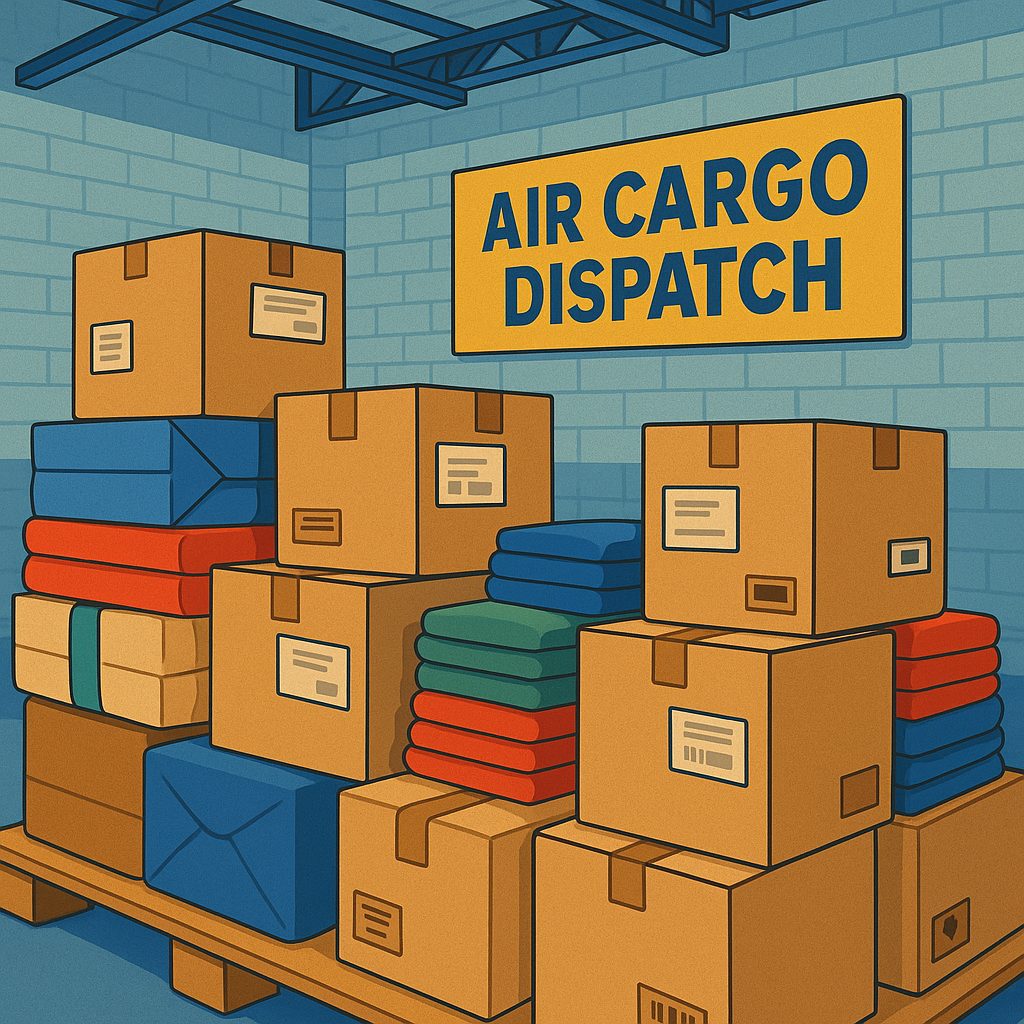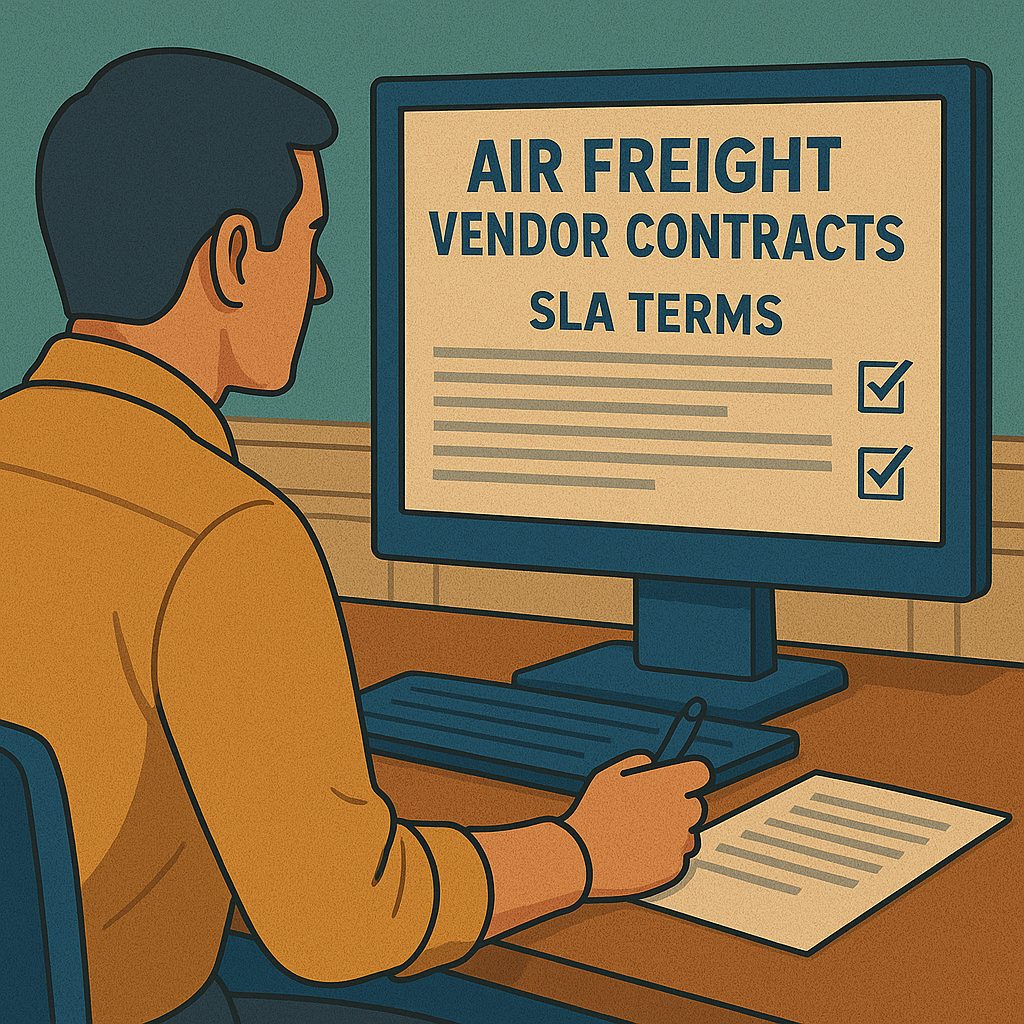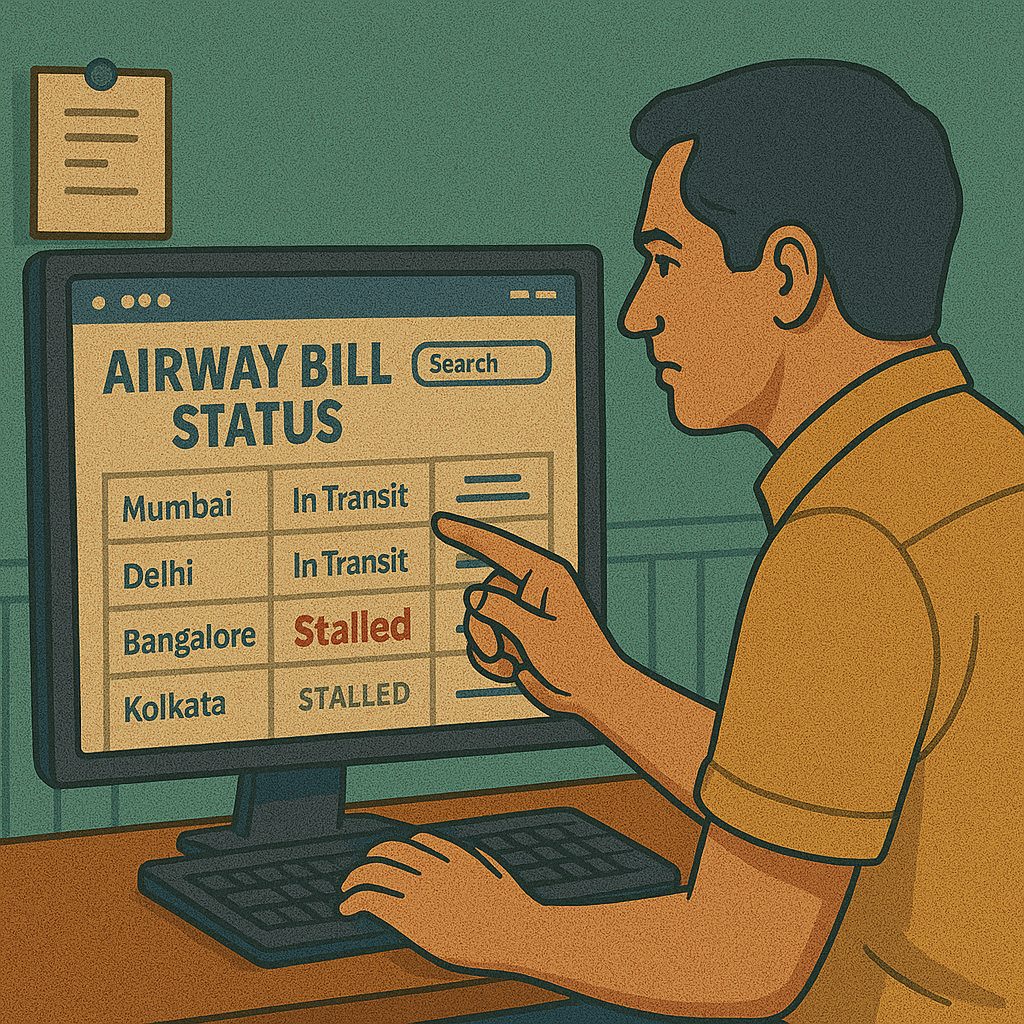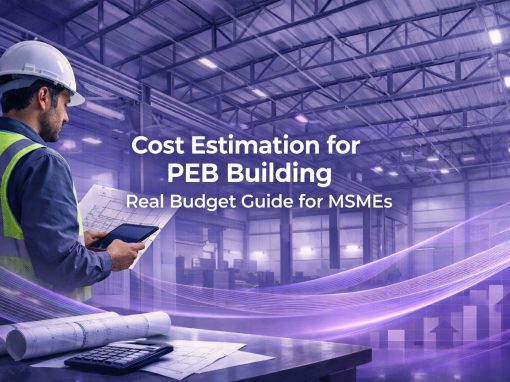Table of Contents
Air freight isn’t a luxury anymore. For many MSMEs, especially those moving high-value or time-sensitive goods, it’s fast becoming a necessity. When a surface shipment takes five days and your customer needs it in two, the math changes. You’re not paying for the weight — you’re paying for speed, assurance, and damage reduction.
Here’s how it works. Your package gets picked up, scanned, and moved to the nearest airport cargo terminal. It’s loaded onto either a dedicated freighter or a commercial flight — depending on the carrier and route. At the destination, it’s unloaded, cleared, and handed over for last-mile delivery. The whole process is trackable through an airway bill, and typically runs on a 24–48 hour turnaround within India.
Now, it’s important to get one thing straight — air freight is not courier. It’s structured, time-bound, and follows strict cutoffs. Miss the booking window or get your documentation wrong, and your consignment won’t fly. The packaging, too, needs to hold up under pressure. Weak tape or loose flaps will cost you.
That said, the benefits are tangible. Lower in-transit damage. Better inventory planning. Happier customers. Take, for instance, a diagnostics equipment supplier in Ahmedabad. Their service contracts often require part replacements within 48 hours. A ground shipment to Bhubaneswar would take too long — but an air shipment ensures uptime and keeps client penalties at bay.
Air freight isn’t your everyday option — it’s your edge when time and reliability matter. And for many growing businesses, that’s worth every rupee.
When Should MSMEs Choose Air Over Surface Transport?
Not every shipment needs to fly. But when timing becomes non-negotiable, air freight steps in — not as a luxury, but as a calculated move. The question MSMEs need to ask isn’t “Is it expensive?” It’s “What’s the cost of delay?”
For instance, if you’re a garments manufacturer in Tiruppur shipping samples to Delhi, and the buyer needs them by Monday morning, you don’t gamble with road freight. Air freight gets it there overnight. Even with a higher per-kilo rate, you’ve protected the business relationship — and possibly secured the order.
Broadly speaking, here’s when air freight makes sense:
- Your shipment is under 100 kg but extremely time-sensitive
- The value of the item is high enough to justify faster transit
- Your buyer expects tight SLAs or same-day/next-day delivery
- You’re shipping to or from tier-2 cities with poor surface connectivity
On the other hand, if you’re dispatching bulk orders of non-urgent goods — like stationery to distributors or fasteners to factories — surface transport wins every time on cost. Especially with PTL (part truckload) or FTL (full truckload), you get predictable pricing and decent lead times. It’s also easier to schedule frequent repeat shipments this way.
Still, speed has a strategic use. Some MSMEs build their air freight costs into the price for key accounts. Others use it only at month-end to fulfill delayed orders and avoid penalties. A food-grade packaging supplier in Noida shared how they reserve air freight for new customer acquisitions — to impress on the first delivery — and then switch to surface for regular loads.
Bottom line: air freight isn’t your default. It’s your differentiator — if used smartly, and sparingly.
Choosing the Right Air Freight Partner
Not all air freight providers are built for MSMEs. Some prioritize large-volume clients, others lack the network depth for tier-2 destinations. Choosing the right partner isn’t just about size, it’s about operational fit and peak efficiency. Here’s how to evaluate your options without getting lost in sales talk.
Key Selection Criteria for MSMEs
The first thing to check: network strength and transit commitment. Does the provider have direct access to the airports your buyers rely on? A vendor operating out of Delhi or Mumbai might still fall short if your clients are in Bhopal or Vizag. Missed regional coverage leads to more handoffs — and that means delays.
Also evaluate their SLA transparency, claim handling speed, and cutoff timings. The best providers don’t promise everything — they set clear boundaries and stick to them.
Courier vs Cargo vs Express Air: What’s the Difference?
This is where confusion usually starts. Couriers handle parcels — under 30 kg, usually documents or small packs. Air cargo providers move heavier loads, often consolidated with others. Express air freight is time-bound, faster, and priced accordingly.
MSMEs with 3–5 shipments per day often benefit more from a hybrid model — using express air cargo for new clients and standard cargo for routine B2B dispatches.
A small electronics trader in Chandigarh told us how switching to express air for fragile items cut their returns by 40%. The packaging was better, the handling faster, and customer complaints dropped overnight.
Red Flags and Vendor Misfits
If a provider dodges clarity on insurance, isn’t willing to share scanned airway bills, or gives vague answers about delivery exceptions, walk away. You need reliability, not guesswork. Also be cautious of those that outsource too many legs of the journey — every extra handoff increases breakage and misrouting risks.
Choose based on your operational rhythm. For some, a local freight forwarder with strong airport relationships will outperform a national brand. It’s not about size — it’s about precision.
Managing Operational Realities of Air Freight
On paper, air freight looks seamless — fast transit, fixed routes, clean handovers. But in practice, MSMEs often face avoidable issues because the operational realities aren’t as simple as they seem. Air freight is high-precision work, and small mistakes echo across the chain.
Take delays. These don’t always happen in the air. More often, they start on the ground — missed documentation, overbooked terminals, hold-ups at the airport gate. One overlooked packaging slip or a wrong GSTIN on the airway bill can hold your shipment back by 12–24 hours. Unlike surface transport, there’s little buffer — flights won’t wait.
Then there’s damage. Contrary to popular belief, air freight isn’t always gentler than road. Yes, it’s faster, but cargo is often handled multiple times: first at pickup, then during screening, then loading, then unloading, and finally during last-mile dispatch. If your packaging isn’t reinforced — especially for items like ceramics, electronics, or compressed materials — breakage risk is real.
Tracking is another pain point. While airway bill tracking exists, visibility can drop once the shipment hits the final leg. MSMEs frequently complain about this: the package shows “arrived at destination city” but sits there untraceable for hours. Why? Because the last-mile partner hasn’t updated the scan yet — or worse, misrouted it.
This affects inventory sync too. A business expecting delivery by Tuesday can’t plan its dispatches for Wednesday if it’s unsure whether the stock has landed. That lag hits small businesses harder, especially those that don’t maintain large safety stock.
A packaging firm in Vadodara shared how they added a simple checkpoint — calling the airport terminal’s cargo handling number directly when high-value goods were in transit. It’s not scalable, but it helped them flag early signs of trouble when their tracking link went silent.
Air freight is operationally sharp. It rewards process discipline and punishes loose ends. MSMEs using it effectively usually have one thing in common — they don’t assume the system will catch errors. They prepare as if it won’t.
Technology and Cost Optimisation in Air Freight
For most MSMEs, air freight feels like a premium service — fast, reliable, but expensive. The truth? A few smart moves can bring both visibility and cost control without stretching the budget. The key lies in choosing tech that fits your scale, and strategies that align with your shipment frequency.
Real-Time Tracking Tools MSMEs Can Actually Use
Most air freight providers now offer airway bill tracking, but the depth varies. Larger carriers integrate GPS tracking, hub-to-hub scans, and even exception alerts. For MSMEs, what matters is clarity, not dashboards full of noise.
Look for systems that show:
- Pickup timestamp
- Airport handover status
- Flight departure and arrival confirmation
- Final-mile handoff details
Even a WhatsApp bot or SMS update system is enough — if it’s consistent. One pharma distributor in Indore switched to a smaller regional carrier just because their tracking updates were 90% accurate, even if slightly delayed. That level of trust helped them plan stockouts better.
Groupage, Load Sharing, and Booking Hacks
You don’t need to fill a plane to afford air freight. Groupage — combining shipments with others on the same route — is a reliable way to lower per-kilo costs. Freight forwarders and aggregators often offer this service, though they don’t always promote it openly.
Another trick? Avoid Fridays. Many MSMEs try to rush deliveries before the weekend, pushing up demand (and rates). Mid-week flights often offer more availability and better cargo handling.
One leather accessories brand from Kanpur negotiated fixed slab pricing by committing to three shipments a week — even if volumes fluctuated. This helped them save over 18% monthly and simplified their invoicing.
MSME-Friendly Tools to Reduce Logistics Overhead
Some software providers now offer plug-and-play solutions tailored for small businesses — pre-built airway bill generators, document checklists, and pricing calculators. These help MSMEs avoid delays caused by missing fields or incorrect HS codes.
Even basic tech, like label printers or weighing scales connected to billing systems, reduce friction. And for those using Shopify or similar platforms, several plug-ins now allow integration with domestic air logistics partners.
Bottom line: you don’t need an ERP to be air-freight ready. You just need tools that prevent avoidable errors — the kind that cost you hours and credibility.
Conclusion
Air freight isn’t the default for most MSMEs — and it shouldn’t be. But when time, reliability, or customer expectations leave no room for delay, it becomes a strategic lever. Whether you’re sending samples to close a deal, replacing a part to avoid downtime, or delivering to cities where road transit fails — air freight can give you that edge.
What matters is knowing when to use it, how to choose the right partner, and setting up internal systems that minimize errors. A good airway bill won’t fix bad packaging. And the fastest route means nothing if your shipment misses the cutoff.
Start small. Test a single route. Track the outcome. Compare the landed cost — not just in rupees, but in customer satisfaction and delivery confidence. Many MSMEs who’ve integrated air freight into their dispatch mix don’t use it daily — but they never go without it when it counts.
Use it for what it is: a sharp, reliable, high-speed tool — not a crutch. That mindset alone separates reactive operators from resilient businesses.
FAQs
What is the difference between air freight and courier services?
How can MSMEs reduce the cost of air freight?
What documentation is required for air freight in India?
How do I track my air freight shipment?
What should I do if my shipment is delayed in air freight?
Is air freight suitable for all types of goods?
What are the common reasons for damage in air freight?
Can air freight be used for international shipments?
How do air freight rates compare to sea freight or road transport?
How do I choose between express air cargo and standard air freight?
Ananya Mittal blends a background in data science with a passion for writing, contributing to Tata Nexarc’s efforts in creating insightful, data-informed content for MSMEs. Her work focuses on exploring sector-specific challenges and opportunities across procurement, logistics, and business strategy. She is also involved in leveraging analytics to strengthen content performance and deliver actionable insights to India's growing B2B ecosystem.


